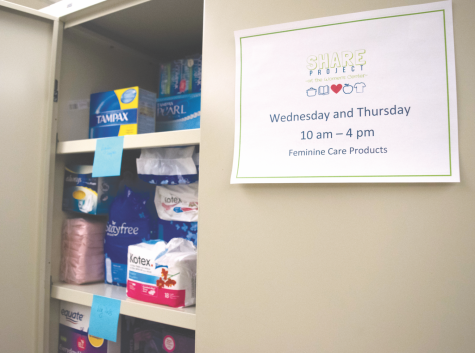A smear for a smear: Women raise awareness for cervical cancer
February 10, 2015
It’s not by accident that more than 4,000 women are coloring outside the lines by smearing lipstick across their faces.
#SmearForSmear, a new viral campaign launched by Jo’s Cervical Cancer Trust on Jan. 25, aims to raise awareness for cervical cancer and encourages women to get Papanicolaou (Pap) smears.
Similar to the ALS Ice Bucket Challenge, #SmearForSmear asks women to post a smeared lipstick selfie and nominate others to do the same as a way to encourage women to be proactive about their cervical health.
The movement has even caught the attention of celebrities like Rita Ora, Georgia May Jagger and Cara Delevigne, who have participated via Instagram to raise awareness.
But they aren’t the first in Hollywood to publicly bring awareness to the disease. In 2010, comedian Kathy Griffin received an on-air pap smear poolside at the Palomar Hotel in Los Angeles for her cable series “My Life on the D-List.”
Cervical cancer forms in the tissues of the cervix, according to the National Cancer Institute (NCI). It’s slow growing and almost always caused by human papillomavirus (HPV) infection.
Know the facts
–In 2014 in the U.S., there were 12,360 new cases for cervical cancer and 4,020 deaths.
National Cancer Institute
–The American Cancer Society’s estimates about 12,900 new cases and about 4,100 deaths from cervical cancer in 2015 in the U.S.
American Cancer Society
–Smear tests save 5,000 lives a year, yet one in five women do not get tested regularly for cancer. For young women ages 25-29, this rises to one in three.
Jo’s Cervical Cancer Trust
–Between 60 and 80 percent of cervical cancer cases occur in women who haven’t had a Pap test in the previous five years.
HealthDay
–Regular Pap smears every two years can help prevent up to 90 precent of the most common type of cervical cancer.
National Cervical Screening Program
Although the cancer may not have any symptoms, it can be found with regular Pap tests (a procedure in which cells are scraped from the cervix and looked at under a microscope) and is the easiest gynecologic cancer to prevent with regular screening tests and follow-ups, according to the Centers for Disease Control and Prevention (CDC).
What was once one of the most common causes of cancer-related deaths for American women, according to the American Cancer Society (ASC), is now beginning to subside due to the use of this screening procedure.
The CDC recommends that all women between the ages of 21 and 65 get regular Pap tests, as it is “one of the most reliable and effective screening tests available.”
Although it might not be acceptable to get a Pap smear “Griffin-style” next to the pool at the Student Recreation and Wellness Center, the tests are available at Kent State’s Women’s Clinic for $25, or $50 for patients without insurance.
“It is important to get routine Pap testing to screen for cervical cancer for early treatment,” said Kim Myford, a certified nurse practitioner in Women’s Health at Kent State’s Women’s Clinic.
The ACS, U.S. Preventive Services Task Force and American College of Obstetricians and Gynecologists all recommend to start Pap testing at age 21, Myford said, with Pap tests every three years from ages 21-29, and every five years from ages 30-65 along with HPV testing, as long as there are no previous abnormal results.
Contact Lily Martis at [email protected] .
























